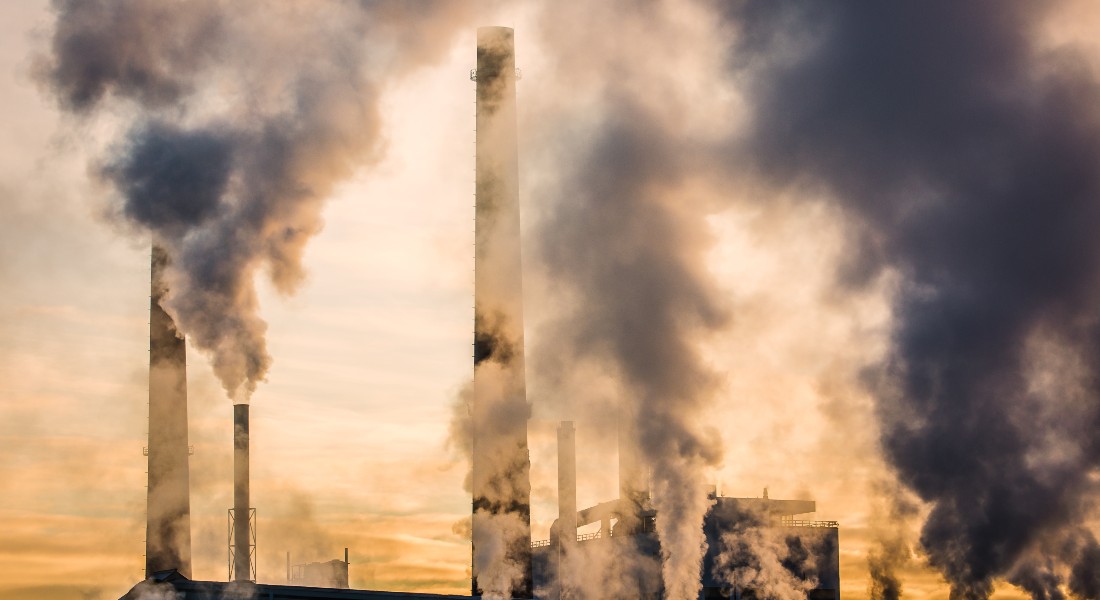International research team: World's climate plans make for a worrying read
According to the climate plans submitted to the UN by 50 countries, 12 gigatons of CO2 per year will continue to be emitted by 2050 – and need to be removed from the atmosphere. Among other things, countries are betting on technology and nature restoration to solve the problem of residual emissions. University of Copenhagen researchers and others describe this as worrying. The researchers recommend rapid reductions here and now.

Every year, the world's oceans absorb twelve gigatons of CO2 from the atmosphere. Twelve gigatons is also the amount of CO2 that countries will rely on new technologies and nature restoration to remove from the atmosphere annually by 2050.
This is a key finding by an international research team. In a new study published in Nature Climate Change, the researchers went through the so-called "long term low emission plans" of 50 countries submitted to the UN Intergovernmental Panel on Climate Change.
The plans outline how CO2 emissions will be reduced, as well as each country’s expected residual emissions in 2050, they year when they expect to reach the point of net zero emissions.
"Our analysis looked at the most ambitious scenarios advanced by countries, as many countries used several different projections, meaning that actual residual emissions may be much larger," says first author of the study, assistant professor Holly Jean Buck of the University at Buffalo.
Co-author, Professor Jens Friis Lund from the University of Copenhagen adds:
"We have been kind to the countries and taken their most conservative emissions estimates by the year 2050. Even then, we are left with 12 gigatons of CO2, an unrealistically large amount to remove. Therefore, as they stand today, the countries' plans make for a worrying read," says Professor Jens Friis Lund of the University of Copenhagen’s Department of Food and Resource Economics, one of the new study’s authors.
Afforestation will impact food security
Only 18 out of the 50 countries that submitted climate plans supplied figures for how large their residual emissions would be in 2050. The researchers used these figures to calculate an average, which was then applied to the other countries.
Despite the large amount of CO2 expected to remain in 2050, the 18 countries still plan to attain net zero emissions that year. This is to be achieved by planting new forests and conserving large tracts of nature, among other techniques.
But according to Professor Jens Friis Lund, this will likely compoundother challenges, for instance increased competition for land for biodiversity protection and food production.
"These very large areas that need to be set aside to remove CO2, will compete with agricultural land and food security. The sheer speed at which forests or biocrops must be planted will pose a risk to people around the world, because there won’t be time to ensure that people are properly heard or compensated," says Jens Friis Lund, an assertion based on a report on the need and potential for removing CO2 that he co-published prior to last year’s COP27.
The prospect of new technologies comes with risk
New technology that can capture atmospheric CO2 also plays a major role in the future plans of countries to reduce their emissions. These technologies include carbon capture and storage (CCS) technology applied to biomass energy and in direct air capture.
“We’ll need negative emissions technologies, but we also need to be aware of the risks. This is not the first time the prospect of new technologies have been relied upon to deal with the climate crisis, without being followed up by strong enough policy or enough investment. We’ve seen the same thing for e.g. CCS technology applied fossil energy. Scrutinising our reliance on residual emissions is a way to keep the pressure on decision makers up," says Nils Markusson, a senior lecturer at Lancaster University, who also contributed to the research.
There are already a handful of direct air capture systems around the planet that remove a few thousand tons of CO2 annually. By 2050, plants like these will be many times larger than they are today and require huge amounts of energy. Energy that needs to be green energy before it makes sense.
"Today, technology allows us to remove a few thousand tons of CO2 every year. This capacity must increase a thousandfold if we are to eliminate the emissions that countries currently expect to have in 2050. This means huge demands on how land is used and the expansion of renewable energy with the sole purpose of removing CO2 from the atmosphere. And this must be added to everything else we already need to do to reduce emissions. It's a huge bill that we’re leaving to future generations," says Jens Friis Lund.
Rapid reductions, here and now
Therefore, the new study also comes with a clear and not too surprising recommendation:
"We strongly recommend accelerating efforts to reduce emissions. Faster reductions here and now are far more preferable to investing in an uncertain technological fix, in a future where the climate crisis has worsened, with even more severe weather phenomena and subsequent climate damage," says Jens Friis Lund.
”Ultimately, our research demonstrates that we need a much more open discussion about all of this. Countries and companies that set net zero targets need to enable a democratic debate about the kind of climate futures that we collectively want, and not hide behind seemingly neutral claims about the kind of emissions they think are "necessary," says senior lecturer Wim Carton of Lund University.
The study was conducted in a collaboration between the University of Buffalo, Lund University, Lancaster University and the University of Copenhagen.
Contact
Jens Friis Lund
Professor
Department of Food and Resource Economics
University of Copenhagen
Mobile: 20 62 77 06
Mail: Jens@ifro.ku.dk
Michael Skov Jensen
Journalist and team coordinator
The Faculty of Science
University of Copenhagen
Mobile: +45 93 56 58 97
Mail: msj@science.ku.dk
